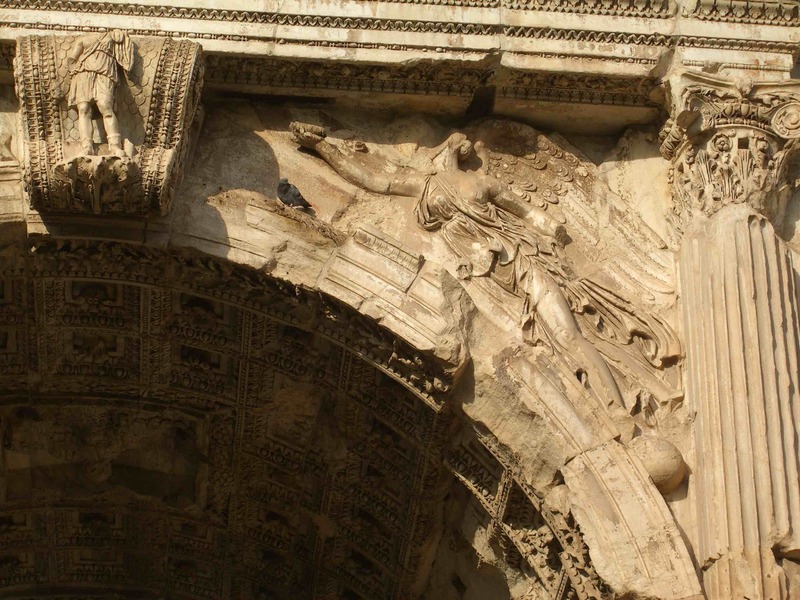Architecture
Romans had been dedicating free-standing arches as monuments for nearly three centuries by the time the Senate and Roman People (SPQR) decreed this one for Titus. Arches were integral to Roman architecture: they distributed weight far more effectively than the rectilinear post-and-lintel system that was more common in Greek architecture. On a monument like this, the archway may have helped distribute the weight of a statue group displayed on top (now lost). The arch monument also created a passageway in the middle of the street, which required and encouraged passersby to walk throught and observe the relief sculptures celebrating Titus more closely. The arch's ornamental columns are in the Composite order, which means that their capitals combine characteristics of the Ionic and Corinthian. Atop the slender, fluted pillars, the capitals possess the volutes (scroll-like tops) of the Ionic and the ornate acanthus leaves common to the Corinthian.
